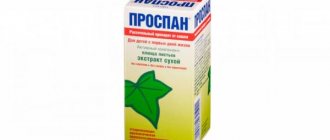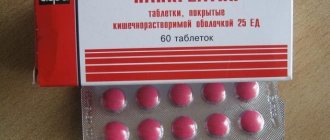A woman cannot be protected from the occurrence of diseases at any period of her life. Fungi and viruses can lead to significant deterioration of health conditions. When breastfeeding, you must be attentive to your well-being and use medications only after consultation with your doctor. Fluconazole during breastfeeding is used as the main effective way to combat fungi. Diflucan and Miconazole are also very popular in this group of drugs. Fluconazole is used as the main active component of each of them. Before using it, you need to understand its positive and negative properties. An important role is played by the influence on the body not only of the mother, but also of the baby.
Composition, release form and pharmacological action
The main component of the drug is considered to be the substance of the same name, fluconazole, one of the triazole derivatives (a highly effective antifungal agent). The product is produced in several variations - these are tablets or capsules and a solution for oral administration in the form of injections:
- There are packages of the drug with different concentrations - from 50 to 150 mg; The composition of the product varies slightly depending on the manufacturer.
- The solution is produced with the following concentration of the active component - 200 mg is recommended per 100 ml.
The pharmacological effect is due to an obstacle to the proliferation of fungal enzymes of protein origin, which in turn increases the permeability of the cell membrane, inhibits their spread, and then completely eliminates pathogenic microbes. Almost all pathogens of fungal diseases are sensitive to Fluconazole.
The product dissolves well and is absorbed in the body, despite taking the medicine even with meals. Fluconazole is rapidly absorbed and reaches its maximum concentration 4 hours after administration.
The active substance is distributed throughout the body in different proportions - saliva, vaginal secretions, sputum, breast milk or fluid around the joints contain the same percentage of the substance as plasma. Most - 90% ends up in the spinal cerebrospinal fluid; the epidermis, stratum corneum and sweat accumulate greater amounts of the active component than blood serum. Half-life products are formed within 30 hours and are excreted in the urine.
General information about the drug
Fluconazole (lat. Flukonazole) is an antifungal (fungicidal) agent for systemic use. It is a triazole derivative [1].
Release form:
- capsules for oral administration of 50, 100 and 150 mg;
- tablets of 50, 100 and 150 mg;
- solution for infusion in bottles of 50 and 100 ml;
- syrup in 100 ml bottles;
- gel (trade names: Flucorem, Fucis).
The drug is effective for diseases caused by the following pathogenic fungi:
- Candida (candidiasis, thrush);
- Histoplasma capsulatum (histoplasmosis);
- Cryptococcus neoformans (cryptococcosis);
- Coccidioides immitis (coccidioidomycosis);
- Microsporum (microsporia, ringworm);
- Trichophyton (trichophytosis, another type of ringworm);
- Blastomyces dermatitidis (blastomycosis).
Pharmacokinetics
After introduction into the body, Fluconazole quickly penetrates the blood, then entering all biological fluids (breast milk, cerebrospinal fluid, intra-articular fluid, lymph, and others). Its content in these liquid media is directly proportional to the amount in the blood [1, p. 2]. The substance is excreted from the body in the urine.
For what diseases is Fluconazole used?
Treatment with this antifungal agent is carried out for the following pathological conditions:
- cryptococcal meningitis;
- candidiasis of the mucous membranes (mouth, nasopharynx, gastrointestinal tract, genitourinary system) and skin;
- coccidioidomycosis;
- invasive mycoses;
- skin mycoses.
In addition, there are a number of diseases that are severe and complicated by fungal diseases. Then an integrated approach to treatment is needed.
Fluconazole is also used for the prevention of candidiasis in cancer patients and people with weakened immune systems [1].
Restrictions on use
You need to know that side effects are possible when using the drug.
Fluconazole should not be used in case of individual intolerance to the drug.
Besides:
- the use of Terfenadine and Fluconazole at the same time is contraindicated;
- Fluconazole cannot be combined with antibiotics and NSAIDs (Ibuprofen, Paracetamol, etc.).
With an inadequately selected dose and increased individual susceptibility of a person, drug poisoning is possible. Symptoms of fluconazole poisoning:
- hallucinations;
- paranoid behavior.
When is the drug indicated for use?
The drug has a fairly wide range of applications, so its use is recommended in the following cases:
- Infectious diseases with fungus of the genus Candida.
- Any type of candidiasis on the mucous membranes - oral cavity, esophagus or urogenital origin (thrush in women and balanoposthitis in men).
- Meningitis due to cryptococcal infection.
- Endemic mycoses to a deep extent.
- Fungus on the nails - onychomycosis. The drug is used not only for medicinal purposes, but also as a prophylaxis to prevent infection with the fungus in patients with secondary immunodeficiencies caused by a complex disease.
At the same time, according to the instructions for use, Fluconazole for hepatitis B is considered a prohibited drug.
Indications for use
Fluconazole may be prescribed during lactation in women, including in the presence of diseases such as:
- genital or intestinal thrush;
- oral thrush;
- fungal infections of internal organs.
In addition, this drug can also be used to prevent fungal infections. But lactating women should still refuse to use this drug in this capacity, replacing it with a safer medication.
Contraindications for women who are breastfeeding
Information in the annotation about contraindications for the use of the drug for nursing mothers is indicated mainly due to the lack of a sufficient number of studies on how the drug affects the development of the child during breastfeeding. The lack of such results cannot guarantee the safe use of the drug for guarding.
Since breast milk contains the same amount of substance as blood when taking the medicine orally, the following calculations result: only 150 mg for the mother will result in a dose for the baby that is much higher than this figure (tens of times), taking into account body weight indicators. Even such a seemingly insignificant dosage for an adult can lead to negative consequences in the form of abnormal heart rhythm, seizures or hepatonecrosis, and it is quite difficult to predict how the drug will behave in the body of a newborn.
Contraindications and features of taking the drug
Fluconazole, Diflucan and Miconazole are contraindicated for a nursing mother with high sensitivity to the components of these drugs. They should also not be used when taking medications that increase the QT interval.
A young mother should be treated with caution for fungal diseases with Diflucan and Fluconazole if she has:
- kidney and liver problems;
- rash from taking these drugs;
- heart disease;
- alcoholism;
- taking terfenadine;
- pregnancy;
- electrolyte imbalance.
Permitted dosage for breastfeeding, as well as an alternative to Fluconazole during lactation
During lactation, fluconazole can be replaced with topical antifungal drugs in the form of suppositories or ointments for vaginal use. This:
- Butoconazole is a two percent cream.
- Miconazole - suppositories.
- Pimafucin - suppositories.
These drugs, in the appropriate form, are almost not absorbed by the body through the vagina, therefore, do not penetrate the bloodstream and breast milk.
But in a complicated form with vaginal candidiasis with a chronic recurrent nature, Fluconazole is prescribed in three doses every 72 hours, one capsule. In this case, breastfeeding is stopped for this period until the drug is completely eliminated from the body. The baby is fed formula or frozen milk supplies. To continue lactation after treatment, the breasts are expressed while taking the drug, but the milk should be disposed of and should not be given to the child. This treatment is used in rare cases and only under the supervision of the attending physician. If there is a fungal infection in a woman’s body that requires intravenous administration of the drug, then breastfeeding is stopped and the baby is transferred to artificial feeding.
Analogues of the drug containing the same substance in their composition
Currently, there are a number of antifungal agents with fluconazole as an active substance.
Today's pharmacology offers a large number of similar remedies for fungi containing fluconazole. The difference may be in price, manufacturer and concentration of the active substance. For example, it could be Russian-made Flucostat or French-made Diflucan, as well as Diflazon, Mikomax, Flucoside and others.
The price can vary from 9 to 50 rubles. for one tablet or capsule with a dosage of 150 mg. The composition of these drugs is distinguished by the presence of additional components that regulate the appearance and consistency of the product, but do not affect the effectiveness of the drug. The only thing that remains unchanged is the main active substance - fluconazole.
Remedies for fungus that are not so dangerous during lactation
Drugs with a similar effect, but with a different active substance, can also be prescribed to nursing women. Moreover, APILAM (Association for the Promotion and Cultural and Scientific Research of Breastfeeding) has allocated several funds with minimal risk to the baby. These include:
Products containing itraconazole
In this case, there are also several similar drugs, but with the same active ingredient - itraconazole. The effect of the substance is identical to that of drugs with fluconazole - the death of fungal cells by preventing their development through ergosterol in the membrane.
A distinctive feature of itraconazole as an active substance is that relapses after it practically do not occur, which cannot be said about fluconazole.
Itraconazole can eliminate systemic infections. Therefore, it is prescribed for histoplasmosis, aspergillosis, candidiasis, cryptococcosis at a time when similar drugs do not help or are not suitable for treating the diagnosed disease.
There is no clear answer about the recommendations of drugs for lactation, since the annotations for drugs from different countries - manufacturers contain different information, for example, Russian analogues indicate that itraconazole is contraindicated during breastfeeding. Therefore, when prescribing such medications, you should consult a pediatrician.
Medicines containing ketoconazole
The action of a series of these products is identical - they destroy the fungus, affecting the membrane-forming elements of fungal cells.
Manufacturers of medicines in Russia still exclude lactation from the recommended period of taking the drug. But foreign colleagues still talk about minimal risk for the newborn.
Therefore, if you need to use products with ketoconazole, you should ask advice not only from a gynecologist, but also from a pediatrician. Moreover, the list of side effects of such analogues is quite significant.
Clotrimazole
This remedy is most often prescribed to women to treat fungal infections. It is based on an active substance called imidazole, which has a similar effect - it destroys cell membranes.
The dosage forms of Clotrimazole are varied.
Clotrimazole is prescribed in ointments, so when this drug is used during lactation, it enters the blood in a minimal concentration. Because of this, it is recommended for lactation by both Russian manufacturers and APILAM.
Varnish Mikozan
This is a remedy that is used to treat fungal infections on the hands and feet. Externally, the drug resembles ordinary nail polish. There is no main active component; Mikozan acts on the fungus mechanically, suppressing its growth. Most often you hear about this remedy that it is not a cure, but a means of prevention. This may be why APILAM does not comment on this drug in any way, since it deals only with medicinal products.
Fluconazole for breastfeeding (breastfeeding) - can it be taken: reviews, analogues
Breastfeeding women often experience vaginal candidiasis. Let's figure out how thrush is treated during breastfeeding.
Treatment methods
Only a doctor can answer the question of how to treat thrush in a particular case based on a confirmed diagnosis.
Breastfeeding imposes significant restrictions on the medications used, since their active substances are absorbed into the blood and breast milk, which can affect the baby’s health.
Incorrectly chosen treatment for thrush often causes the development of a chronic form of the disease. Therefore, uncontrolled use of drugs is strictly prohibited.
The most preferable and effective treatment is with local vaginal suppositories and ointments, which, unlike tablets, have fewer contraindications and are almost always harmless to the child and mother.
Positive results are obtained from complex treatment with medications, traditional medicine and compliance with preventive measures.
Allowed tablets
There are modern oral medications for thrush that can be used during breastfeeding (Fluconazole, Miconazole, Diflucan). The safe dosage of the drug should be selected by the attending physician.
Local treatment
Traditional drugs for the treatment of thrush are given in the table.
| Name of the drug | Action | Main contraindications | Mode of application | Efficiency (on a scale of 0-10) |
| Pimafucin (suppositories, ointment and cream) | Antibiotic active against fungi. Does not disrupt microflora, does not affect the composition of milk | Increased sensitivity | One suppository per day for 3-6 days. The ointment is applied up to 4 times a day until complete healing | 10 |
| Livarol (suppositories) | Antifungal agent, practically not absorbed into the blood | Hypersensitivity and pregnancy | One candle per day for 3-5 days | 9 |
| Zalain (suppositories and ointment) | Antifungal drug with antibacterial activity. After using the suppositories, a burning sensation and the appearance of copious vaginal discharge for 1-2 days are typical. The ointment is not absorbed into the blood and does not pass into breast milk | Increased sensitivity | Single use. If necessary, repeat the following after a week. The ointment is applied 2 times a day for 4 weeks | 9 |
| Hexicon (suppositories and ointment) | Antiseptic. Does not disturb microflora | Increased sensitivity | Two suppositories per day for 10 days. The ointment is used 2-3 times a day for 7-10 days. | 8 |
| Terzhinan (vaginal tablets) | Combined antifungal, antimicrobial, antiseptic agent. Inhibits natural microflora | Increased sensitivity | One tablet in the vagina before bed (previously keep it in water) for 10 days | 6 |
| Purelan (ointment and cream) | Safe healing and pain reliever. Completely absorbed into the skin. Natural composition | Increased sensitivity | Used at any time of the day until the symptoms of candidiasis are eliminated | 10 |
| Bepanthen (ointment) | Disinfectant and healing agent | Increased sensitivity | Use 1-2 times a day until healing | 9 |
| Candide(solution) | Antifungal agent. Not absorbed into the blood | Increased sensitivity | Wiping the affected areas, including the child’s oral mucosa | 10 |
| Clotrimazole (cream, vaginal tablets) | Antifungal agent. Common side effects | Increased sensitivity | The ointment is applied 2-4 times a day for 4 weeks. Tablets 2 times a day for 3-6 days | 7 |
Folk remedies
When fighting thrush during breastfeeding, you can use traditional medicine in combination with basic treatment:
- Douching with a solution of potassium permanganate (potassium permanganate), which has an antimicrobial effect. To prepare it, you need to add a couple of crystals of the product to one glass of boiled warm water and stir until completely dissolved. The solution must be used no later than 30 minutes from the moment of preparation.
- Douching and washing with chamomile decoction, which has bactericidal properties. Pour one liter of boiling water over 2 tablespoons of herbs, simmer over low heat for five minutes, cool and filter.
- Drink green tea daily to remove toxins.
- Frequently wipe the nipples with a soda solution. Baking soda is alkaline, which helps reduce itching. For 0.5 liters of warm boiled water, use 2 teaspoons of the product.
Before douching during breastfeeding, you should consult a specialist.
Nipple therapy
Ignoring the symptoms of nipple thrush can cause infection of the baby and inflammation of the milk ducts. It is important to maintain hygiene during this time. When using ointments in accordance with the instructions or doctor's prescriptions, you must thoroughly rinse off the drug before feeding with clean water.
To prevent the thrush fungus from spreading, it is necessary to periodically “ventilate” the nipples after all procedures and eliminate their moisture. It is also important to replace breast pads after each feeding.
In addition to the use of antifungal drugs for thrush, restoration of the microflora of the nipple areola is required. You can use a treatment method that is absolutely harmless to a child and a nursing woman - applications of Lactobacterin, diluted with water to a cream consistency.
If you experience severe pain, you can adjust your baby's breastfeeding regimen by shortening the duration and increasing the frequency.
Causes of the disease
The cause of thrush is a fungus of the genus Candida, a small amount of which is always present in the microflora of a healthy person. It often begins to actively multiply in the body of a nursing mother after childbirth and causes damage to the genital organs, and in some cases, inflammation of the milk ducts and nipples.
The appearance of thrush during breastfeeding is due to the following reasons:
- Weakening of local immunity, resulting in a decrease in the amount of secretion produced by the mucous membranes of the vagina, which prevents the proliferation of harmful fungi;
- Restructuring of hormonal levels;
- Resumption of intimacy too early after childbirth or infection from a partner;
- Relapse of chronic diseases of the intestines and genital organs;
- Violation of the rules of personal hygiene, as well as insufficient or excessive hygiene, leading to disruption of the natural microflora;
- Treatment with antibacterial drugs;
- Ignoring the rules of healthy eating;
- Development of vitamin deficiency;
- Use of hormonal contraceptives;
- Stress;
- Hypothermia;
- Cracks in the juices if there is thrush in the baby’s mouth;
- Unfinished treatment of fungus during pregnancy.
Symptoms
A woman’s body reacts to the pathological proliferation of fungus (thrush) in the vagina with the following symptoms:
- A burning sensation and itching that may stop periodically, discomfort during urination;
- Redness and swelling of the external genitalia;
- Thick, cheesy white discharge with a characteristic unpleasant odor;
- Swelling and itching of the nipples, dryness and flaking, changes in color and sensitivity, thick white discharge from the milk ducts;
- Painful, spastic sensations on the skin and inside the nipple when feeding a newborn, intensifying after its completion;
- Reducing milk volume.
When a child is infected with thrush during breastfeeding, he or she experiences a white coating in the mouth in the form of spots with a red edge, anxiety and refusal to breastfeed, which is a reaction to painful sensations and the appearance of a rash in the groin area.
Prevention of thrush
To avoid the development of thrush during breastfeeding, a woman must follow certain rules:
- Wash and dry your breasts thoroughly after each feeding;
- Change absorbent pads for mammary glands in a timely manner;
- Take air baths;
- Wash your hands thoroughly before feeding;
- Wash yourself twice a day with warm water, douche only as prescribed by a doctor;
- Refrain from swimming in natural bodies of water;
- Change sanitary pads frequently and avoid tampons;
- Give preference to underwear made of breathable fabrics that do not cause discomfort, especially in the chest area;
- Stop taking antibacterial agents or use probiotics;
- Adjust your diet by reducing the consumption of flour and sweets, include fermented milk drinks, fruits and vegetables, and whole grains in your diet;
- Stop taking hormonal contraceptives during breastfeeding;
- Minimize the intake of dietary supplements.
The manifestation of signs of thrush in a woman during breastfeeding is a common problem. If you follow preventive measures and promptly consult a doctor, candidiasis will not cause harm to the mother and child.
Source:
Fluconazole for breastfeeding: the benefits and harms of the drug, can it be taken while breastfeeding and how to do it with minimal harm to the baby?
Fungi lead to deterioration of health and develop when immunity decreases. Women are often susceptible to this disease during lactation, when the body has not yet fully recovered its strength and is experiencing another hormonal change.
The antifungal drug Fluconazole can help nursing mothers, but its active components can also affect the baby, so with breastfeeding it is necessary to compare all the risks and benefits for the health of the woman and the baby.
Composition and effect of the drug
The drug also contains excipients - starch, calcium stearate, capsules are characterized by the presence of dye, preservative and gelatin. They help the drug to be absorbed quickly.
The active substance of Fluconazole has the ability to penetrate into all biological fluids, so the medication is very effective in the treatment of candidiasis. After taking the tablet or capsule, the product is actively absorbed and begins to act within an hour and a half.
Can I take it while breastfeeding?
Fluconazole is able to pass through the bloodstream into breast milk, being in it in the same concentration as in blood plasma. This can negatively affect the baby's health. The instructions for the drug prohibit taking the drug while breastfeeding.
Important! There is an opinion among doctors that a single dose of 150 mg is safe for the child, but it is better to stop breastfeeding for 5-7 days.
During lactation, Fluconazole is prescribed strictly as directed by the doctor in compliance with all recommendations and dosage. A nursing mother must understand responsibility for the possible consequences and state of health of the child after taking the medication.
Source: https://mschmvd42.ru/zabolevaniya-kozhi/flukonazol-pri-gv-grudnom-vskarmlivanii-mozhno-li-prinimat-otzyvy-analogi.html
Overdose and adverse reactions
An overdose of the drug is possible not only if a large amount of Fluconazole is taken, but also when a woman has significant problems with the urinary system. The drug takes a long time to be eliminated from the body and can provoke a cumulative effect, which will lead to poisoning. Gastric lavage, laxatives or enterosorbents can help. In difficult cases, administering an intravenous saline solution along with a diuretic will help.
Before taking Fluconazole, it is better to read a number of possible side effects. These include:
- disorders of the gastrointestinal tract - lack of appetite, vomiting, attacks of nausea, pain, upset stool, bloating;
- drug-induced hepatitis, increased liver enzymes in the blood, cholesterol, bilirubin, hepatonecrosis;
- manifestation of allergies on the skin;
- disorders in the field of neurology in the form of altered consciousness - tremor, hallucinations, peripheral paresthesia, paranoid behavior;
- anemia, thrombocytopenia, neutropenia or agranulocytosis.
Is it possible to combine the drug with other medications?
If, in addition to the fungus, a woman’s body has concomitant diseases in the chronic stage, she has to take several medications at the same time. Therefore, it is worth understanding how Fluconazole interacts with other drugs.
For example, this drug cannot be used together with Erythromycin or Terfenadine, since their combined use has a toxic effect on the heart muscle, causing arrhythmia.
Diuretics promote excessive release of fluid, while the concentration of the fungicide in the blood serum increases, which can lead to the same consequences as with an overdose.
Amitriptyline, when taken together with Fluconazole, increases the effect of therapy, but sometimes it is necessary to adjust the dose or dosage regimen.
Anticoagulants, when taken together, can change their effect and affect the body in an enhanced manner, and this can lead to the formation of hematomas or bleeding.
Considering the contraindications and possible side effects of the drug, independent choice of Fluconazole for treatment is unacceptable.
In conclusion, we can say that not all antifungal drugs are approved during lactation. Therefore, only a doctor should prescribe each remedy, based on the patient’s complete medical history and seeing the whole picture of what is happening.
Can I take it at all?
One of the features of Fluconazole is that it can pass into breast milk. The absorption of this drug is simply excellent. Moreover, after ingestion, breast milk often contains the same amount of it as the blood of the patient undergoing treatment with it.
Many doctors are against the use of Fluconazole during breastfeeding. Such doctors do not prescribe this drug to their patients, replacing it with safer analogues.
But still, most doctors prescribe this medicine to women who need treatment and are breastfeeding. Despite the fact that Fluconazole is absorbed into breast milk in significant quantities, in most cases it does not cause any particular harm to the baby’s body. The drug is relatively safe both in terms of contraindications and side effects. In addition, according to the instructions, this medicine can be used to treat not only adults, but also children, including infants.
The active substance of this drug contained in mother's milk, when taken in an amount of 150 mg, for example, does not exceed the dosage of the drug that pediatricians usually recommend for the treatment of newborns.
A distinctive feature of this medicine is its duration of action. Lactating women usually do not take more than one tablet of medication for fungal diseases. The answer to the question of how long Fluconazole lasts after taking it is several days. The active substance of the drug remains in the patient’s blood for 3 days.










